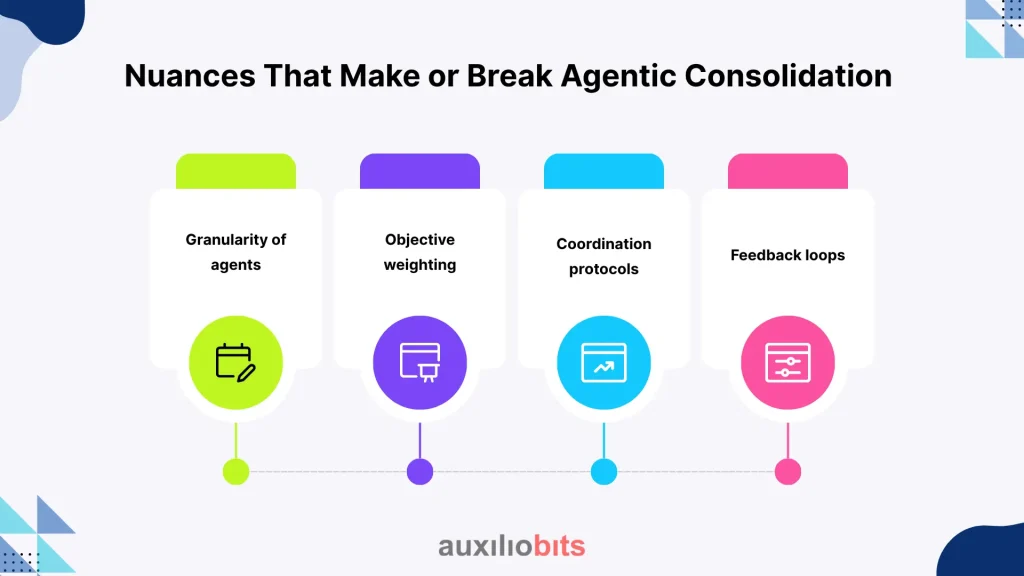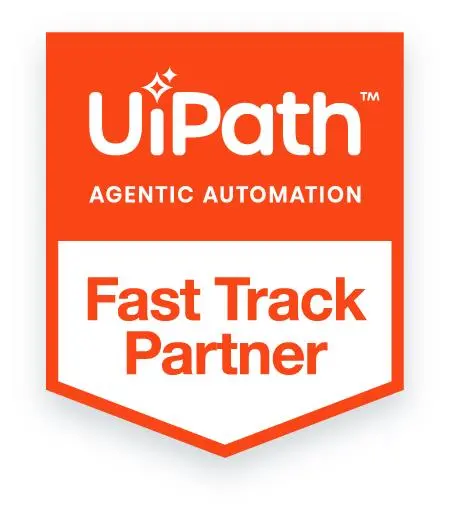
Key Takeaways
- Static consolidation methods are increasingly insufficient in volatile supply chains, leaving vehicles underutilized and inventory inefficiently positioned.
- Agentic decision logic enables real-time, decentralized, and adaptive shipment grouping, balancing multiple trade-offs such as cost, delivery time, and service commitments.
- Hybrid human-agent systems outperform fully automated models by allowing planners to handle edge cases while agents manage routine dynamic decisions.
- Implementation comes with costs and complexity, including integration with live data sources, computation resources, and organizational change management.
- Strategically deployed dynamic consolidation can become a competitive differentiator, improving throughput, reducing delays, and enhancing customer satisfaction while hiding the complexity from end users.
Freight consolidation has always been an efficiency lever in logistics, but the problem is that traditional models operate on static rules. Shipments are grouped on schedules, by origin-destination pairs, or by customer contracts, and little flexibility is left once lanes are locked in. That rigidity keeps spreadsheets clean, but it also leaves trucks half-empty, planes underutilized, and inventory sitting longer than necessary.
Dynamic consolidation flips the model. Instead of waiting for planners to batch cargoes based on static thresholds, agent-based decision logic continuously evaluates order flows, constraints, and capacity—and reshapes grouping in real time. This is not about squeezing an extra pallet onto a truck. It’s about enabling supply networks that behave more like adaptive ecosystems.
Also read: Adaptive robotics: agents that learn from operational data to fine‑tune robotic workflows
Why Standard Consolidation Breaks Down
Freight planners have been consolidating for decades. The issue is that methods still depend on either:
- Fixed cut-off times: Orders received by 2 PM ship together; later orders get bumped. This works for stable demand but collapses under volatile e-commerce order inflows.
- Contractual bundling rules: Major customers get guaranteed dedicated lanes, which underutilize vehicles when order volumes dip.
- Static optimization runs: Monthly or quarterly models balance cost across lanes, but can’t pivot when weather, strikes, or sudden demand shifts change the picture overnight.
It’s here that legacy approaches show their cracks. A quick example: a major apparel retailer tried to consolidate parcels going from East Asia to European DCs on twice-weekly flights. But when order volumes fluctuated seasonally, containers often left 65% full, burning margins. Worse, the inventory shortfall at downstream hubs created bullwhip effects. Static “rules of thumb consolidation couldn’t adapt fast enough.
Enter Agentic Decision Logic
The difference with agentic models is not just speed, but decentralized responsiveness. Instead of running one master optimization overnight, agent-based systems deploy multiple decision-making entities—software agents that act semi-autonomously yet coordinate with one another.
These “agents” assess shipment data, available vehicles, market rates, and service commitments. They don’t just evaluate “Can order A and B fit together?” They weigh trade-offs:
- Would delaying order A by four hours allow it to consolidate with others without breaking customer SLAs?
- Is route B’s lane surcharge lower than the cost of sending two separate partial trucks?
- If order C is sensitive (pharma, for instance), should it override consolidation logic entirely?
Agentic logic is inherently probabilistic. It handles uncertainty—port congestion, strike alerts, or last-mile vehicle breakdowns—by factoring risk scenarios, not assuming deterministic outcomes. That difference sounds academic, but in operations, it keeps wheels moving with fewer unpleasant surprises.
Real-World Example: Air Freight Capacity Crunch
During the pandemic, air cargo belly capacity collapsed by 60–70% when passenger flights were grounded. Freight forwarders suddenly had to decide which shipments to combine into fewer freighter slots. Static optimization models failed spectacularly—by the time planners finalized allocations, conditions on the ground had already changed.
Some providers deployed agent-based algorithms where each shipment “argued” for space using weighted attributes (urgency, perishability, revenue impact). Agents then dynamically proposed groupings that balanced priority and volume. The result was less theoretical optimality but more practical throughput. Airlines worked with loads that made sense moment-to-moment, not based on prior-day assumptions.
Did it solve everything? Not really. There were still capacity shortages, political route closures, and black swan disruptions. But companies that used these adaptive models maintained higher service ratios because their logic didn’t assume yesterday’s rule set still applied today.
Nuances That Make or Break Agentic Consolidation
It’s tempting to think of this as “AI magic that packs freight better.” Reality is more nuanced. Agent-based consolidation succeeds or flops based on subtle design choices.

- Granularity of agents: Do you assign each order its own agent, or do you group by SKU type, customer, or regional cluster? Too granular and you drown in complexity; too broad and you lose finesse.
- Objective weighting: Cost per unit shipped, delivery time, CO₂ footprint, service tier compliance—all matter. But the weights vary by customer and market. A pharma firm may set lateness as a non-negotiable, while a fashion retailer tolerates an extra day in exchange for freight savings.
- Coordination protocols: Agents can’t act in isolation. They need consensus-building logic. Some use “auction” models where freight lots bid for space. Others run constraint-satisfaction protocols more akin to multiplayer problem-solving.
- Feedback loops: The model must incorporate performance back into weighting. If a lane routinely fails SLA due to traffic, the system should auto-adjust consolidation thresholds for that corridor. Static weights doom the system to repeat old mistakes.
Without those nuances, agentic systems quickly overfit to theory and lose operational credibility.
Where Human Judgment Still Trumps Algorithms
Despite automation hype, not everything can or should be left to agents. For instance:
- When a geopolitical event suddenly alters customs clearance rules, algorithms may continue to propose consolidations that are technically feasible but practically impossible. Humans catch those edge cases.
- A long-term customer relationship might justify prioritizing a less-than-optimal consolidation outcome just to maintain trust. Software rarely accounts for such relational nuances.
- Some commodity categories require gut instinct from planners. Agricultural shippers may rapidly alter consolidation choices if monsoon rains delay harvests—waiting for agents to “learn” from that new condition risks spoilage.
Agentic consolidation should not eliminate planners but amplify their decision capacity. In fact, the best deployments run hybrid: routine day-to-day grouping is automated, while exceptions escalate to experienced human operators with contextual knowledge.
Costs and Trade-Offs
It’s naïve to suggest this is a pure efficiency gain. Dynamic systems introduce their own overheads.
- Integration complexity: Pulling live data from TMS, WMS, IoT trackers, and rate engines is no small feat. If feeds lag or contradict, agents may act on stale inputs.
- Computation expenses: Real-time decision-making at shipment-level granularity carries a non-trivial computing cost. Cloud instances aren’t free, and constant recalculation burns the budget.
- Organizational resistance: Human planners may resist ceding control, dismissing system decisions as a “black box.” That friction can sabotage adoption.
Still, when balanced properly, savings often outweigh these costs. The key is to define where dynamic consolidation actually moves the margin needle. For high-volume retail lanes, it’s worth the complexity. For low-volume specialty cargo, it may not be.
Practical Applications Beyond Freight
Dynamic consolidation using agentic decision logic resonates beyond trucks and planes:
- E-commerce fulfillment: Orders are dynamically bundled by last-mile couriers into shared routes. Agents can decide if bundling is efficient or if splitting across couriers reduces penalties from late deliveries.
- Maritime containers: Port congestion often upends container allocation. Agents can negotiate shared consolidation among shippers, automatically suggesting co-loading under alliance structures.
- Reverse logistics: Returns can be intelligently grouped into backhauls or regional return hubs instead of scattered small shipments.
The principle remains the same: distributed decisions that respond to the flow of real-time uncertainty, rather than static batching.
Why Industry Still Hesitates
If the benefits are clear, why haven’t agentic consolidation models become standard? Several reasons persist.
- Trust gaps: Customers—and even shippers—want to understand why a load was held or rerouted. Black-box consolidations erode confidence.
- Regulatory concerns: Cross-border consolidations may violate cabotage or customs agreements if handled dynamically without correct documentation.
- Equity between stakeholders: Dynamic choices may consistently disadvantage low-margin customers. Unless governed carefully, consolidation could turn into an opaque rationing system.
Companies wary of customer backlash often underuse the potential. And frankly, that caution isn’t misplaced. One bad decision—like delaying a vital healthcare shipment to optimize a truck fill—could undo years of trust.
The Competitive Advantage
When executed well, agent-driven consolidation becomes a differentiator. Consider how retail leaders position their supply chains. They’re not advertising “AI-driven agents.” They talk about “fresher replenishment,” “one-day delivery to secondary cities,” and “lower carbon kilometers.” Beneath those claims, what’s running quietly is adaptive consolidation logic.
Service differentiation in logistics rarely comes from flashy branding; it comes from consistent outcome improvements. Dynamic consolidation is the plumbing that allows those outcomes. Those who implement it thoughtfully, balancing autonomy with oversight, reap efficiency gains invisible to customers—but very visible to finance.
Closing Thought
If anything, shipment consolidation has always been seen as mundane—a back-office line item. That perception is flawed. With agentic decision systems, consolidation transforms into a strategic lever. You’re not just moving boxes more cheaply—you’re re-engineering flow resilience.
Will this become universal? Probably not. Many networks are too small or too risk-averse. But in volatile, global supply environments, the old playbook of static cut-offs and pre-set loads looks increasingly brittle. The firms willing to let intelligent agents make micro-decisions—while still holding onto human judgment in the margins—will be the ones absorbing disruption instead of being broken by it.








